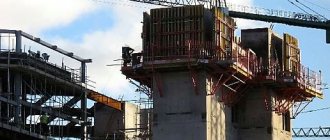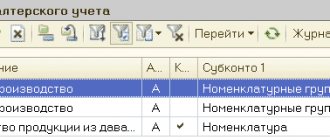During the construction of several objects, which will be leased after completion of construction, the organization combines the functions of an investor, a customer and a developer. Are general business expenses (in particular, salaries of management personnel (director, accountant), management expenses (communication services, office rent)) taken into account when forming the initial cost of a construction project in the period when the organization is only constructing objects and does not carry out other types of activities, and in a period when the construction of some objects continues, while others have already been built and are being rented out?
Investment activity in the Russian Federation is regulated by Federal Law No. 39-FZ of February 25, 1999 (hereinafter referred to as Law No. 39-FZ) and the RSFSR Law No. 1488-1 of June 26, 1991 (to the extent that does not contradict Law No. 39-FZ).
According to Art. 1 of Law N 39-FZ capital investments are investments in fixed capital (fixed assets), including costs for new construction.
The subjects of investment activities carried out in the form of capital investments are, among other things, investors and customers (Article 4 of Law No. 39-FZ).
Law No. 39-FZ does not contain the concept of “developer”. The concept of this subject of investment activity is given in paragraph 16 of Art. 1 of the Town Planning Code of the Russian Federation.
Clause 6 of Art. 4 of Law No. 39-FZ provides that a subject of investment activity has the right to combine the functions of two or more entities, unless otherwise established by an agreement and (or) government contract concluded between them.
In this case, the organization combines the functions of investor, customer and developer.
What is the idea behind cost accounting in construction?
As soon as the construction organization is registered as a legal entity, the management process begins. Management decisions can be made by managers only when there is data obtained in the course of work. The result should be an analysis of all decisions made on a particular issue. It is most convenient to monitor decisions made using indicators. They can be expressed both numerically and as a percentage.
We can conclude that competent management is possible only when all the data is reliable. To create an overall picture, it is important to take into account not only general information, but also information about the work of all departments.
In the modern world, for a company to be successful, it is important to make the right decisions. But this cannot be achieved without planning, analysis and control. Cost accounting in construction using Finoco technologies is the method that allows you to combine all this.
Domestic difficulties in implementing management accounting
The main reason why more than 2/3 of company managers make management decisions mostly intuitively is the lack of understanding of the need for such accounting. In addition, there are a number of other obstacles that stand in the way of effective budgeting in the construction industry:
- ineffectiveness of existing reporting - due to delays in accounting documentation, the information in it often becomes irrelevant;
- non-targeting - costs are grouped not by centers of financial responsibility, but simply element by element, that is, it is often unclear which of the construction departments this or that group of budget elements belongs to;
- lack of motivation to save - cost reduction is not attractive to management, internal reporting is very imperfect;
- a number of unresolved accounting problems - for example, analytical accounting of a significant part of the industry - unfinished construction - is practically not carried out.
Features of cost accounting in construction
The peculiarity of cost accounting in construction is that the direction itself is not simple.
For example, each project in a company has its own duration, or the construction process is very unique. It is also taken into account that each project goes through more than one approval stage and there must be an estimate. The estimate is the beginning of any construction project. And there are a lot of such moments in this type of business. According to statistics in the Russian Federation, for each director there are 2.4 legal entities. There are many reasons for this: work in different tax entities, different asset ownership structures, the desire to reduce tax payments, and much more. In this case, keeping a consolidated account of the contractor’s costs and calculating the real profit of the construction project becomes not easy.
There is no secret that it is necessary to keep track of expenses in construction. In the absence of this accounting, the organization automatically faces a high risk of becoming insolvent. As a result of such actions, bankruptcy is not far off.
Contractor cost accounting tasks
The main task is to provide construction company managers with all the necessary data to make the right decisions. Decisions can be made during:
- planning expenses for a certain period of time;
- cost planning, analysis and control over execution;
- ready-made reports will help identify the strengths and weaknesses of the business. This data can be only for your company, or a comparative analysis with competitors.
Cost control in construction must necessarily include:
- estimate;
- accounting and work with contracts. This applies to both customers and contractors, suppliers of goods and services;
- schedule. He is responsible for the timeliness, analysis and control of the company's costs. That is, it allows you not to miss the deadline for a particular payment. Provides tracking of deadlines and quantity of work performed.
The FINOKO web service, based on many years of experience, has prepared an automated management accounting system in construction. Which directly includes cost accounting in construction. A ready-made model allows you to quickly and clearly obtain data for maintaining, analyzing and controlling the expenditure side of the enterprise. Such accounting can be easily maintained both for one object and for all at the same time. The finished standard includes:
- summary and operational reports. This applies to both one object and several;
- the general report is intended to manage commercial expenses;
- summary report on materials used in the construction process, etc.
Management accounting in construction makes it possible to formulate a company’s work plan. For example, how much materials we will need in the planned period of time, and how much we will spend on them. What obligations must be fulfilled and what expenses the company must make for the entire period.
Cost accounting in construction. Where to begin?
Where does construction begin? Not from laying the foundation, much earlier. It cannot be started if there is no understanding of what expenses need to be made. A painful topic in this area is incorrect accounting in construction. This results in a lack of funds to cover all expenses. Therefore, accounting for construction costs must begin with drawing up an estimate.
An estimate is a document approved between the customer and the contractor. It contains a list of work that needs to be performed. Determine what materials are needed, in what quantities and in what period. Determine the final cost of the object. To make it easier to work with the document, it is advisable to break down all the information into time steps. Make a schedule. For example, when is the payment required, or by what date must a certain stage of construction be completed. All estimates may differ from each other. But they must convey the same essence.
Accounting for contractor costs is easier if the estimate is drawn up correctly. Based on the schedule, we will know about all upcoming expenses and receipts. Accordingly, control is easier to carry out.
Why is cost control needed in construction?
Construction is a long process with several production cycles. Variety of work, variety of objects of varying complexity. One of the tasks of a construction company is to control costs. If you lose control of construction costs, the company may face serious difficulties.
The main problem is that we need to get the final financial result of the entire object. At the same time, have information about the financial result of each month. These questions are precisely answered by cost accounting in construction.
In accordance with the recommendations, it is necessary to control costs in construction for direct and indirect expenses. But we should not forget that the choice of cost accounting method in construction must be justified by the technological process and depends on the type of activity.
Based on the information received, it is possible to conduct a full analysis, regulate and control all expenses. As a result, it will not be difficult to quickly take action and correct the situation. The success of the company depends on how carefully we keep track of contractor costs. When analyzing cost accounting in construction for a certain period of time, we will immediately identify which item is causing the overrun and for what reason.
Control of construction costs based on direct costs.
Direct costs in construction are one of the main components of the estimated cost. They include all expenses that need to be made for construction work, as well as inevitable expected expenses. Accounting for direct costs must be carried out according to the following items:
Wage
All expenses for remuneration of employees involved in the construction process are reflected here:
- Production workers;
- Workers who move equipment and materials around a construction site.
When calculating wages, it is necessary to take into account the time spent performing each type of work. Methodological collections can come to the rescue, which indicate calculation methods, norms and prices.
Costs of operating transport and materials
- Depreciation;
- Cost of electricity and fuels and lubricants, auxiliary materials;
- Remuneration of workers who maintain construction machines.
The unit for assessing transport performance is the engine hour. The total time includes moving from site to site, repair work to replace spare parts, paid technological breaks.
The cost of one engine hour is determined using the following criteria:
- cost of repairs;
- depreciation of a piece of equipment;
- price of parts;
- fuels and lubricants;
- transportation costs, etc.
Transport operating costs can vary based on many factors: weather conditions, road conditions, cargo dimensions, etc.
Direct costs in construction include the costs of troubleshooting problems during the work process. These may include costs for warranty service and repairs.
Materials
Materials are factors in determining the cost of buildings and structures under construction. All expenses are incurred as specific work is completed. Errors in accounting for construction costs based on materials can affect the outcome of the work as a whole. As a result, the risk of underpayments and overpayments increases.
This article includes all costs for materials, semi-finished products, and structures. And also, the costs of procurement, delivery and storage. This also includes the price of the materials and raw materials themselves.
Costs can be incurred as certain work is completed, or incurred in advance.
To correctly determine the cost of materials, you need to know the cost of each unit. Also, consumption is important, separately for each type of work.
Other direct costs
Just like other expenses, the list may change based on the specifics of the activity. In the process of cost accounting in construction, other direct costs include:
- Increased costs in winter;
- Expenses for transporting workers;
- Expenses for maintaining rotational camps, payment of daily allowances;
- Costs of maintaining and repairing roads at the time of construction;
- Travel expenses;
- Insurance;
- Maintenance of rescue services;
- Expenses for organizing trades and tenders;
- Costs of ensuring normal working conditions.
Accounting for indirect costs
The exact opposite of direct costs in construction are indirect. They do not directly influence the determination of the value of the object. Accounting for their costs for indirect costs must be carried out under the following items:
General production expenses
These are the costs of servicing main and auxiliary production.
- maintenance of construction machines;
- depreciation and repair costs of fixed assets;
- wages of key workers;
- maintenance of construction sites;
- Communal expenses;
- rent;
- costs of recruiting and training personnel;
- administrative and management expenses;
- taxes and payments;
- other expenses for construction work. Ancillary expenses.
This type includes the cost of services consumed by the main production:
- Electricity generation services;
- Heat generation services, etc.
What conclusion can we come to by accounting for construction costs based on indirect costs? It's not that important. If you share this opinion, then you have already painted yourself into a corner. Without paying attention to the magnitude of such expenses, we can slowly lead the company into serious problems.
The main purpose of cost accounting in construction is to provide complete information about the financial position of the company. Properly organized accounting of contractor costs allows you to have information on all costs during the construction process for further analysis. Simply put, such cost control in construction allows you to effectively manage and coordinate work.
Allocations for the maintenance of the client’s supervisory unit and deductions for the construction control itself are carried out according to two separate calculations.
The regulation includes paragraphs 14 and 15. They indicate that the standardization of costs borne by the customer during construction supervision during the construction of capital buildings, the construction of which is financed in shares or in full by federal budgetary funds, as well as the quantitative standardization of performers, on whom he, in the prescribed manner, assigned responsibilities for monitoring construction, is determined by the relevant annex. Costs are calculated based on the total capital investment in construction work (base price as of 01/01/2000). The exception is the costs associated with the purchase of land. VAT is not taken into account. Calculations are made on the basis of cost standards, which are described in the appendix to the regulations. The results of the accruals are included in the 10th chapter of the generalized estimate for current construction. A separate line “Construction control” is allocated for them. MDS 81-35.2004 in paragraph 4.87 determines that deductions for “Maintenance of the customer-developer’s service. Construction control" are included in chapter N10 of the consolidated estimate. The 7th and 8th columns are allocated for this.
The use of standards for costs incurred by the customer in exercising control over construction during the construction of capital structures, the financing of which is partially or fully raised from the federal treasury, is directly dependent on the total investment in construction. The basic price level is taken as of 01/01/2000. Limits on the number of personnel on whom the client entrusts the mission of organizing surveillance are also fixed.
“Regulations on conducting construction control during the construction, reconstruction and major repairs of capital construction projects” was approved by the government (Resolution No. 468 of June 21, 2010). It defines the technology for supervision of construction during construction, implementation of reconstruction measures and organization of major repairs of buildings that fall under the category of capital buildings, regardless of the origin of the sources used to finance them. The regulation also stipulates how the amount of allocations for organizing construction control should be determined, and what should be the number of personnel responsible for construction supervision in relation to objects whose financing, in part or in full, comes from the federal treasury.
Application of the provisions of MDS 81-7.2000 allows making cost calculations for the maintenance of a control unit, including determining the number of performers according to the standard. The primary legal document governing production, economic and other relationships existing in the investment sphere is a contract concluded between entities.
Reading the letters of the Ministry of Regional Development N 22467-SM/08 (09/05/2008), N 26188-IM/08 (10/15/2008), N 11615-SM/08 (04/21/2008) will help to better illuminate the problem. ). They set out provisions that should be followed.
Cost planning in construction
Cost planning in construction is a very important part of management accounting in construction. Without paying due attention to this section, you may not begin the construction process at all. Cost planning in construction has a great impact on the entire management process as a whole.
Contractor cost planning and control is divided into:
- complex;
- specialized;
- promising;
- operational;
- strategic;
- tactical;
- local;
- global.
Cost planning in construction solves the following issues:
- whether all material and technical resources of the construction company are used expediently;
- analyzes the market and allows you to plan based on existing conditions;
- gives a clear picture, which allows all departments to carry out operational work;
- increases the effect of applying all data for the forecast period of time;
- simplifies and systematizes control over the activities of the enterprise.
Planning expenses in construction should be carried out for a strictly defined period of time. This is due to the market situation, prices for materials, competition, etc. Due to fairly frequent changes, it is important to always be up to date and plan activities based on current situations.
Planning of internal costs in construction
The main goal of cost planning in construction is to reduce risks in the activities of a construction organization. Intra-company planning is aimed at the development prospects of the company, based on the business plan. In-house resource planning in construction may change if the market has had any changes.
In-house contractor cost planning solves the following problems:
- identify the economic condition of the company;
- what issues need to be resolved in order for all goals and objectives to be realized.
With this type of cost planning in construction, it is necessary to take into account:
- market conditions and demand for works and services;
- whether available resources will be used wisely;
- what needs to be done to make a profit, etc.
Main principles of cost planning in construction
- unity. This principle includes continuous interconnection between the company's divisions. It is meant to ensure that all departments cooperate as a single unit for the successful implementation of assigned tasks;
- participation. If the principle of unity took into account divisions, then here each employee is taken as a basis. Staff must understand what is wanted from them and how this should be achieved;
- continuity. In a construction organization, activities must be continuous. That is, one goal is achieved, followed by another. There should be no gap;
- flexibility. The market situation can change quite quickly and unexpectedly. The company must be prepared for this and immediately change its action plan;
- accuracy. All planning must be accurate in relation to the company itself. Plans must be realistic and feasible.
Planning and forecasting costs in construction based on estimates
The beginning of the formation of costs in construction is the estimate. An estimate is a planning of upcoming expenses that need to be made in order to complete certain work.
Cost estimate tasks
- planning payments in construction for all the nuances of the project;
- informing departments and personnel about the goals set;
- production process management;
- performance evaluation.
The process of execution of the estimate must be constantly monitored. What we got is what was intended. If there are any deviations, it is urgent to take action and try to avoid this in the future. Of course, it may also be that the cost planning in construction based on the estimate was not drawn up correctly. That is, no factors are taken into account, and the company simply cannot fulfill it. Therefore, if we determine that the estimate may be invalid, action must be taken. But this must be done in advance.
Cost planning in construction based on estimates is developed based on:
- information about material costs. This takes into account the required amount of resources to complete the work;
- information on payroll costs and deductions;
- depreciation, etc.
Specifics of the construction industry from the point of view of management accounting
Construction as an activity is characterized by a number of specific nuances that cause increased financial risk when implementing projects in this area. Management accounting can significantly reduce the degree of risk if it is organized and maintained on the basis of industry factors taken into account.
- Dependence on the state. Construction, like no other area, is largely subordinate to the state “machine”, primarily in obtaining permits, approvals, registration, etc. The costs of these activities are difficult to plan in advance.
- Long investment cycle. Construction is a slow process. From the start of a project to its completion (acceptance of the finished building by the commission) several years, sometimes even a decade, can pass, and during this time the market situation can change significantly.
- Each project is unique. Yes, there are standard structures, but even they need to be adapted to a specific area, and other unique nuances must be taken into account.
- Design and estimate nature of the activity. Financial planning is based on a previously drawn up estimate, on which the effectiveness of the project depends.
- A unique management structure. Most domestic construction organizations operate in the form of holdings that combine some production facilities, a contractor company, a design bureau, an investment company, etc. Sometimes there is a separate management company above this structure, in some cases its functions are performed by an investor.
- Human factor. Unfortunately, it should be noted that often personnel and managers of construction companies do not accept innovations in the field of management techniques and information systems, which can complicate the implementation of effective management accounting.
FOR EXAMPLE. A construction company is building an apartment building, the housing in which is planned to be sold. The closer the construction is completed, the higher the price of apartments. In a finished and accepted house, they will cost significantly more than at the initial stage of construction. Therefore, it is difficult to correlate the construction plan with the apartment sales plan. It is necessary to keep records in such a way that at each stage so many apartments can be sold, taking into account the changing price, in order to be able to at least finance this stage of construction work.





